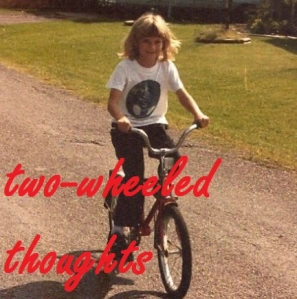 Book three of the Kingston Cycle does not disappoint. It did feel somewhat like a shift in tone for me, and changed up my pacing. But I am a big fan of Polk and hope they’re at work on more like this.
Book three of the Kingston Cycle does not disappoint. It did feel somewhat like a shift in tone for me, and changed up my pacing. But I am a big fan of Polk and hope they’re at work on more like this.
In this installment we see a new protagonist again: Robin Thorpe, who we knew in the first two books as a nurse, Miles’s dear friend, and a witch of the less-privileged, illegal sort. She is also an activist and an important member of the movement to free the witches from asylums and gain some basic human rights for all citizens. She was suspicious of Grace at first (for which I don’t blame her), but also a big enough person to remain open-hearted and learn to trust. (This process we also saw with Grace learning to accept Tristan over her original prejudices.) We’re building communities and coalitions: Robin working with her people, including the Solidarity movement, and their elected official; Robin, Miles, Tristan, and Grace working together and with the Amaranthines for the good of Aeland and its people. Trust has to develop slowly and naturally in several of these relationships; the process is slow and messy, but it’s working.
Early in the book, we have a bit of a revelation. One of the freed witches is Robin’s spouse, Zelind. Mere kids when they married in secret, they are now reunited, but only after decades of separation and trauma. Robin will now navigate the political activist roller coaster she’s entered into, while also trying to reintegrate a longed-for relationship with some profound challenges. Zelind of course turns out to have some talents to offer as well, aside from being Robin’s love.
It was my feeling that Soulstar takes a darker turn than the previous two books. The stakes are getting higher, or the problems the reader is aware of are getting bigger – they’re not new, but we’re getting deeper into this world and learning more. As I’ve said before, this world’s problems are easily seen as analogous to our own.
Grace led us through the gilded reception hall, looking neither left nor right at the people lifting priceless works of art from the walls. It pricked my conscience until I turned my face up to behold our reflections in the mirrored tiles in the ceiling fixed together by gold moldings. Solid gold, I remembered from the time we trooped into the palace as schoolchildren to stare at all the finery I now understood to be hoarded wealth. The taxes of five hundred clan houses held those mirrors together. The wealth in that ceiling could fed the entire country for a year. This ostentation and greed had to end.
The dream team our leaders are putting together is up for this dismantling if anyone is, but the bad guys’ power is considerable and they’re not giving up easily. There was one special challenge mounted late in the book that about broke my will, although luckily these characters are tougher than I am.
Race has been a sort of understated issue throughout the trilogy. Class and privilege make up an obvious one, and climate change, and politically, we’re moving towards self-determination and communal systems of support. The issue of race is less clear: characters are sometimes noted as being Black or white, or described in terms that imply race (blonde, dreadlocked, dark skin), and privilege sometimes lines up with race, but I think not always. I’m not certain how this is meant to be read, whether we’re looking at a mostly-race-stratified society or simply a diverse one. Queer relationships have also been centered throughout. Book one saw a romance between two men, book two featured one between two women, and in book three, Robin is rejoined to her nonbinary spouse. (We also see a triangle marriage buck against Aeland’s societal norms, although it’s not unusual in Samindan culture.) Queerness seems to encounter some raised eyebrows, but not enormous resistance (the triangle marriage is much less accepted).
As another note, now that I’ve got all three books in me, I want to appreciate the covers, which are visually pleasing and offer some clue as to setting, and feature modes of transportation associated with the protagonist of each: a man on a bicycle for Miles on the cover of Witchmark; two figures in a coach for Grace (Stormsong); and now a couple skating for Robin in Soulstar. It’s a neat nod to the world Polk has built here.
As a trilogy: fantasy, world-building, romance, allegory, lovely writing and beautiful details, easy immersion. This writer is a great talent. I hope there is so much more to come, whether in Aeland or anywhere else Polk chooses to take me.
Rating: 8 sweaters.
Filed under: book reviews | Tagged: LGBTQ, romance, speculative fiction | Leave a comment »
 “There was a brief lull in the general chatter when the bandit walked into the coffeehouse.” It was not because he was a bandit; this was fairly commonplace. It was because he was extremely attractive. Nevertheless, chatter eventually recommences, until a fight breaks out – waitress, belligerent customer, manager, the beautiful bandit, and then a homelier bandit #2 – smashing the place to bits. It’s an appropriately exciting first chapter, setting up a cast of characters that we will follow well beyond the bounds of the coffeehouse. In fact, the majority of this short, lively book is set in the jungles and on the roads of a kingdom in turmoil.
“There was a brief lull in the general chatter when the bandit walked into the coffeehouse.” It was not because he was a bandit; this was fairly commonplace. It was because he was extremely attractive. Nevertheless, chatter eventually recommences, until a fight breaks out – waitress, belligerent customer, manager, the beautiful bandit, and then a homelier bandit #2 – smashing the place to bits. It’s an appropriately exciting first chapter, setting up a cast of characters that we will follow well beyond the bounds of the coffeehouse. In fact, the majority of this short, lively book is set in the jungles and on the roads of a kingdom in turmoil. 














